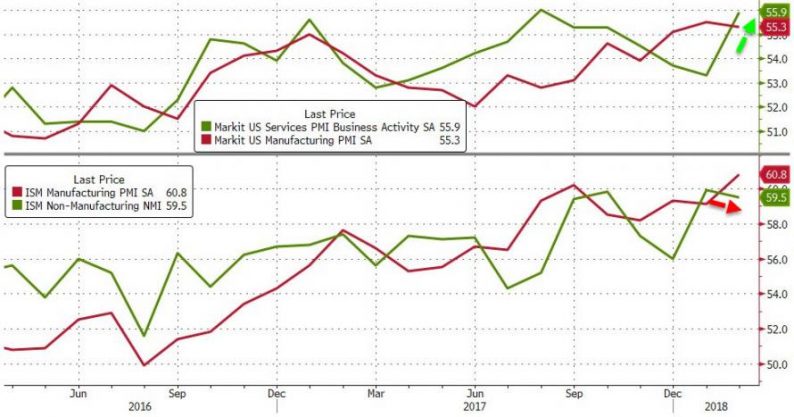On the heels of US Manufacturing’s stagflationary signals (albeit mixed ISM/PMI headline prints), the US Services sector was also mixed (ISM dipped as PMI spiked) but the latter confirmed signs of significant price inflation (largest monthly rise in aggregate prices since September 2014).
As a reminder, Manufacturing was extremely exuberant according to ISM and disappointing according to Markit’s PMI.
In the case of the Services economy, Markit’s PMI jumped to its highest level since Nov 2015 but ISM dipped from record highs in January (but was slightly better than expected)…

ISM Breakdown
While ISM shows a modest drop in prices paid, Markit suggests that on the prices front, cost burdens faced by service providers continued to rise in February. The rate of input price inflation accelerated to the fastest since June 2015. Where higher input costs were reported, panellists commonly linked this to higher fuel and raw material prices. Meanwhile, amid larger cost burdens and greater client demand, average charges also rose further as firms protected margins. Moreover, the pace of inflation quickened to the sharpest for five months.
And ISM survey respondents were anxious:
“Lumber-related costs continue to increase as supply is also starting to become a problem. The market volatility of construction materials and the short supply of construction labor have added difficulty to long-term planning.”
“Slight increase in activity; beginning to see some higher cost for goods and services.”
Commenting on the PMI data, Chris Williamson, Chief Business Economist at IHS Markit said:













Leave A Comment